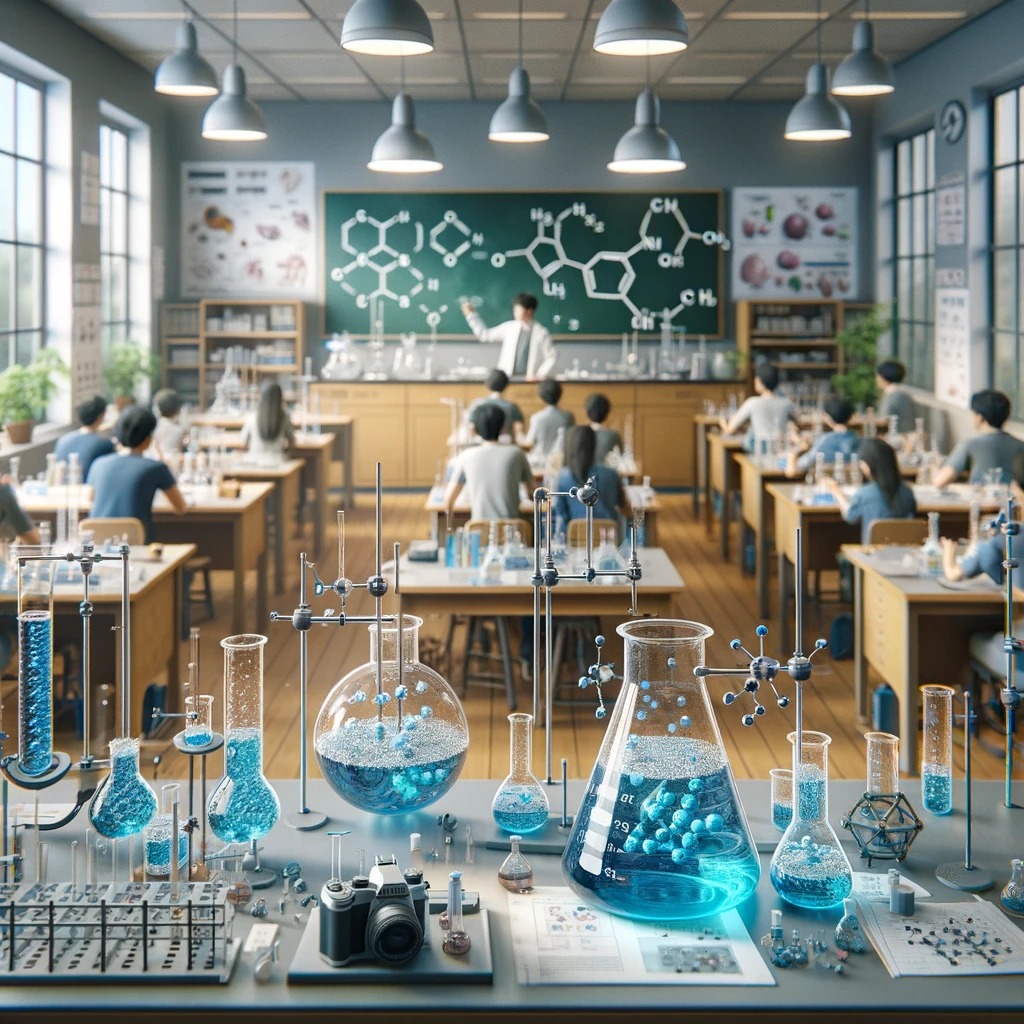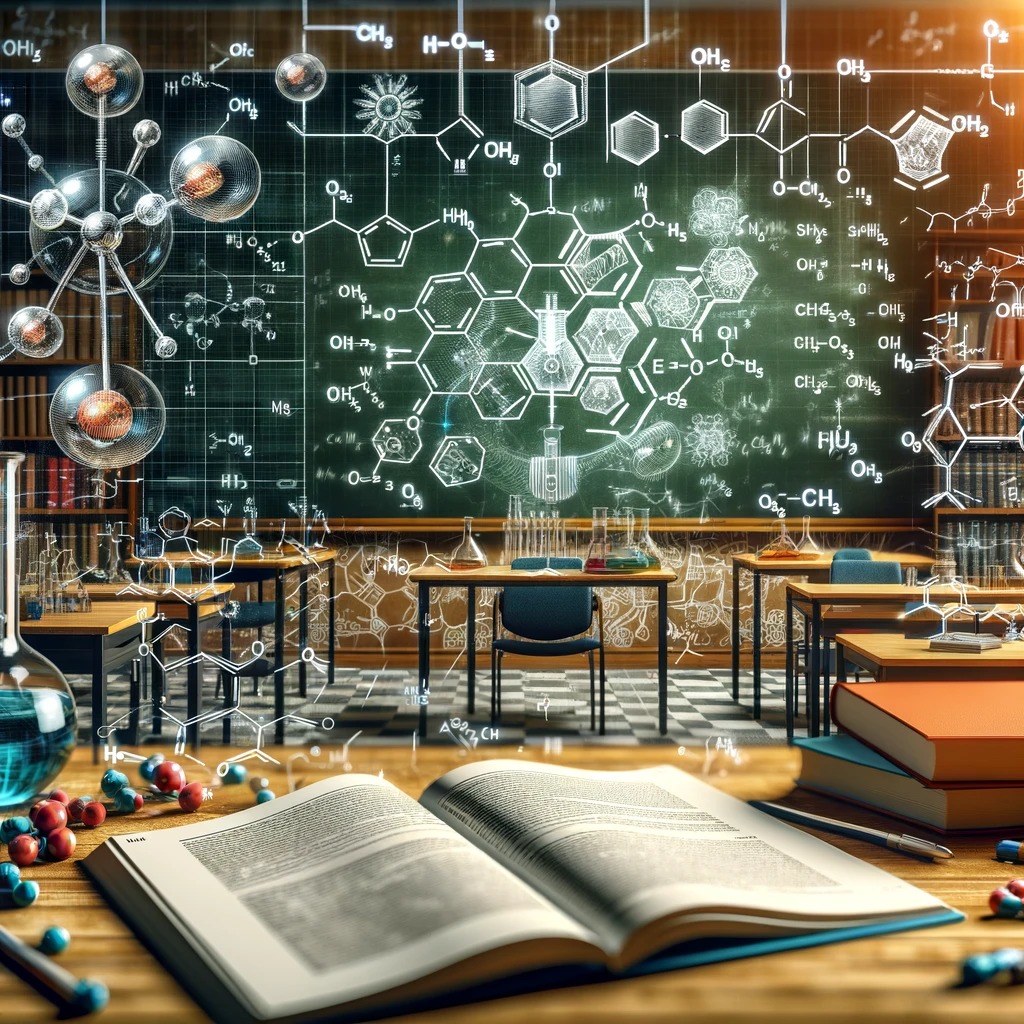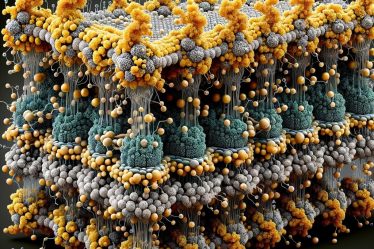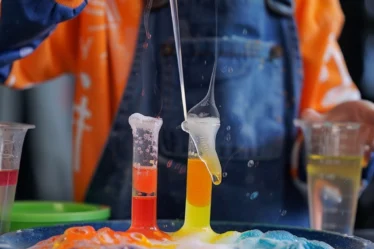
Have you ever wondered what happens chemically when you bake a cake or when leaves change color in the fall? Read more to find out all about the different categories of chemical reactions.
A chemical reaction is a process where one set of chemicals changes into another. Think about when you light a candle or see rust form on metal – these are everyday examples of chemical reactions. At their core, all categories of chemical reactions involve the movement of electrons, leading to the making and breaking of chemical bonds.
If you find different chemical reaction types tricky, why not contact a chemistry tutor? They can offer personalized guidance to make sense of these reactions, whether you’re prepping for an exam or just curious about chemistry.
Categories of Chemical Reactions: Key takeaways
In a hurry? Don’t worry. Our critical takeaways on categories of chemical reactions will give you a quick and easy summary of the main points:
➜ All five types of chemical reactions—synthesis, decomposition, single and double displacement, and combustion, drive the chemistry in everyday life, from batteries and baking to photosynthesis and energy production.
➜ Redox, acid-base, precipitation, and equilibrium reactions are other types of reactions you’ll encounter.
➜ The atomic structure, especially electron configurations, determines how elements react and bond in different categories of chemical reactions.
➜ If you find these chemical reactions challenging, don’t worry! Personalized tutoring or interactive chemistry lessons make these concepts more straightforward.
Explore more chemistry topics and broaden your knowledge with our free World of Chemistry blogs.
How Atomic Structure Determines the Types of Reactions Chemistry Can Produce
The atomic structure of an element, particularly the arrangement of electrons, is vital in determining the types of chemical reactions it can engage in. Like noble gases, elements with a full outer shell of electrons tend to be less reactive. In contrast, those with incomplete outer shells, like hydrogen or fluorine, are more inclined to react.
Each element has a unique electron configuration, which shapes its chemical behavior. Hydrogen (H), with just one electron, is highly reactive and typically forms covalent bonds. Meanwhile, helium (He), with a complete outer shell, is less inclined to react and doesn’t usually form bonds.
Table: Electron configurations of common elements, reactivity, and bond type
| Element | Symbol | Atomic Number | Electron Configuration | Valence Electrons | Reactivity | Bond Type |
|---|---|---|---|---|---|---|
| Hydrogen | H | 1 | 1s1 | 1 | High | Covalent |
| Helium | He | 2 | 1s2 | 2 | Low | None |
| Lithium | Li | 3 | 1s2 2s1 | 1 | High | Ionic |
| Beryllium | Be | 4 | 1s2 2s2 | 2 | Low | Covalent |
| Boron | B | 5 | 1s2 2s2 2p1 | 3 | Moderate | Covalent |
| Carbon | C | 6 | 1s2 2s2 2p2 | 4 | Moderate | Covalent |
| Nitrogen | N | 7 | 1s2 2s2 2p3 | 5 | Moderate | Covalent |
| Oxygen | O | 8 | 1s2 2s2 2p4 | 6 | High | Covalent |
| Fluorine | F | 9 | 1s2 2s2 2p5 | 7 | High | Ionic |
| Neon | Ne | 10 | 1s2 2s2 2p6 | 8 | Low | None |
This table illustrates a key concept: elements like hydrogen and fluorine, with one or seven valence electrons, are highly reactive. They often engage in ionic or covalent bonding, as in everyday chemical reactions. In contrast, elements like helium and neon show much lower reactivity when their valence shells are filled.
The Five Main Categories of Chemical Reactions and How to Identify Them
In chemistry, there are five main types of chemical reactions: synthesis, decomposition, single displacement, double displacement, and combustion. We’ll also see how other categories, like redox and acid-base reactions, fit into these main categories of chemical reactions.
Examples and Equations for Each Type of Reaction
1. Synthesis Reactions: Involve combining reactants to form a single product.
Example: 2H2 + O2 → 2H2O (forming water).
2. Decomposition Reactions: A compound breaks into simpler substances.
Example: 2H2O → 2H2 + O2 (water decomposing).
3. Single Displacement Reactions: One element replaces another in a compound.
Example: Zn + CuSO4 → ZnSO4 + Cu (zinc displacing copper).
4. Double Displacement Reactions: Exchange of ions between two compounds.
Example: NaCl + AgNO3 → NaNO3 + AgCl (sodium chloride and silver nitrate reacting).
5. Combustion Reactions: A substance reacts with oxygen, releasing energy.
Example: CH4 + 2O2 → CO2 + 2H2O (methane combustion).
Table: Five Main Categories of Chemical Reactions
| Reaction Type | General Pattern | Example |
|---|---|---|
| Synthesis | A + B → AB | 2H2 + O2 → 2H2O |
| Decomposition | AB → A + B | 2H2O → 2H2 + O2 |
| Single Displacement | A + BC → AC + B | Zn + CuSO4 → ZnSO4 + Cu |
| Double Displacement | AB + CD → AD + CB | NaCl + AgNO3 → NaNO3 + AgCl |
| Combustion | CxHy + O2 → CO2 + H2O | CH4 + 2O2 → CO2 + 2H2O |
Are you finding these concepts tricky? A chemistry tutor can guide you through the maze of reactions, from understanding synthesis to tackling combustion. They provide personalized lessons tailored to your needs, making inorganic chemistry not just understandable but enjoyable.
Synthesis Reactions Meaning: Combine to Form a Single Product
Synthesis reactions are processes where multiple reactants unite to form a single, more complex product. It is essential to understand the meaning of synthesis reactions in chemistry.
For example, water forms from hydrogen and oxygen (2H2 + O2 → 2H2O), and ammonia from nitrogen and hydrogen (N2 + 3H2 → 2NH3). Synthesis reactions typically happen under low temperatures and high pressure, often with catalysts. They’re essential in photosynthesis, industrial chemical production, and medicinal compound synthesis.
Decomposition Reactions: When a Single Compound Breaks Down
Decomposition reactions in chemistry involve a single compound dividing into simpler substances. These reactions are integral to decomposition reactions chemistry.
For instance, water decomposes into hydrogen and oxygen (2H2O → 2H2 + O2), and hydrogen peroxide into water and oxygen (2H2O2 → 2H2O + O2). These reactions usually require high temperature, low pressure, or electricity. They are essential in biology, biochemistry, industry (like electrolysis), and even fireworks.
Single Displacement Reactions: One Element Replaces Another
In single displacement reactions, one element replaces another in a compound. Single Displacement Reactions often involve a more reactive element replacing a less reactive one.
Zinc displaces hydrogen in hydrochloric acid (Zn + 2HCl → ZnCl2 + H2), copper replaces silver in silver nitrate (Cu + 2AgNO3 → Cu(NO3)2 + 2Ag), and magnesium displaces hydrogen in water (Mg + 2H2O → Mg(OH)2 + H2). The activity series and solubility rules govern these reactions in battery production, corrosion processes, and metallurgy.
Double Displacement Reactions: Two Compounds Exchange Ions or Atoms
Double displacement reactions involve two compounds exchanging ions or atoms to create two new compounds. These reactions can result in the formation of a precipitate, a gas, or water.
For example, barium chloride reacts with sulfuric acid to form barium sulfate and hydrochloric acid (BaCl2 + H2SO4 → BaSO4 + 2HCl). These reactions follow solubility rules and charge balance, which are significant in acid-base neutralization, water purification, and medicine. Double displacement reactions worksheets can be helpful for practice and review.
Combustion Reactions: Producing Heat and Light with Oxygen
Have you ever wondered what type of chemical reaction fire is? Combustion reactions happen when a substance reacts with oxygen, releasing heat and light.
A typical example is methane combustion (CH4 + 2O2 → CO2 + 2H2O), producing carbon dioxide and water. Combustion can be complete or incomplete, affecting energy production, transportation, and our understanding of fire. Combustion reactions worksheets are a great way to practice.
Categories of Chemical Reactions Based on Different Criteria
Apart from the five main types of chemical reactions, there are other ways to categorize reactions based on different criteria, including redox reactions, acid-base reactions, precipitation reactions, and equilibrium reactions.
Redox Reactions: Electron Transfer and Oxidation States
These reactions transfer electrons between atoms, altering their oxidation states. An example is the reaction of zinc with copper sulfate, where zinc is oxidized and copper is reduced (Zn + CuSO4 → ZnSO4 + Cu). Redox reactions can be seen in synthesis, decomposition, single displacement, or combustion processes.
Acid-Base Reactions: Neutralization Processes
An acid reacts with a base to produce salt and water in these reactions, commonly seen in neutralization processes. For instance, hydrochloric acid reacts with sodium hydroxide, forming sodium chloride and water (HCl + NaOH → NaCl + H2O). These reactions are typically a form of double displacement.
Precipitation Reactions: Formation of Insoluble Solids
These occur when two aqueous solutions react to form an insoluble solid, known as a precipitate. A classic example is when silver nitrate and sodium chloride form a silver chloride precipitate (AgNO3 + NaCl → AgCl + NaNO3), also classified under double displacement reactions.
Equilibrium Reactions: Dynamic Balance of Forward and Reverse Processes
These reactions happen when the forward and reverse reactions occur at the same rate, leading to a dynamic balance. A well-known example is the Haber process for ammonia synthesis (N2 + 3H2 ↔ 2NH3). Equilibrium reactions can manifest in various forms, including synthesis, decomposition, or other reaction types.
These categories of chemical reactions find applications across diverse fields. Redox reactions are integral to electrochemistry, acid-base reactions play a role in pH regulation, precipitation reactions are crucial in crystal formation, and equilibrium reactions are vital in maintaining chemical balance in numerous processes.
Table: Connection to the five main categories of chemical reactions
| Type of Reaction | Definition | Example | Relation to the Five Main Types |
|---|---|---|---|
| Redox Reactions | Reactions involving electron transfer | Zn + CuSO4 → ZnSO4 + Cu | Can be synthesis, decomposition, single displacement, or combustion |
| Acid-Base Reactions | Acid and base react to form salt and water | HCl + NaOH → NaCl + H2O | A type of double displacement reaction |
| Precipitation Reactions | Formation of a solid from two aqueous solutions | AgNO3 + NaCl → AgCl + NaNO3 | A type of double displacement reaction |
| Equilibrium Reactions | Forward and reverse reactions occur at the same rate | N2 + 3H2 ↔ 2NH3 | Can be any type of reaction |
Understanding these various categories of chemical reactions and their criteria enhances one’s ability to analyze and predict chemical behavior in different contexts.
Chemical Reactions in Everyday Life and Science
Chemical reactions are fascinating in our daily lives, often unnoticed but crucial. For example, when you cook or bake, you initiate chemical reactions that transform ingredients into delicious meals. In cleaning, reactions between detergents and stains remove dirt—even the exhilarating feeling of adrenaline rush results from chemical changes in the body.
Anyone curious about chemistry in daily life can explore simple experiments or consult a chemistry tutor to discover more about the science behind these everyday phenomena.
Suppose you’re on the lookout for a chemistry tutor. In that case, a simple search like “organic chemistry tutor Liverpool” or “inorganic chemistry teacher Edinburgh” on platforms like meet’n’learn can help you find the right private teacher for your needs.
Those who prefer group learning environments can easily find chemistry classes nearby by searching for “chemistry classes Leeds” or “chemistry lessons London” online. This will lead you to local schools or educational centers.
How to Learn the Categories of Chemical Reactions
As we conclude this journey through different categories of chemical reactions, remember that understanding these processes is vital to academic success and appreciating the world around us. Keep exploring types of reactions through experiments, online resources, or classes, and watch as the world of chemistry comes alive.
Are you struggling to grasp these reactions? An organic chemistry tutor or hands-on organic chemistry lessons can make a big difference in turning these complex ideas into something you can easily understand and use.
Categories of Chemical Reactions: Frequently Asked Questions
1. What are the five main categories of chemical reactions?
The five main categories are synthesis, decomposition, single displacement, double displacement, and combustion reactions.
2. Can you give examples of synthesis reactions?
An example of a synthesis reaction is the formation of water from hydrogen and oxygen (2H2 + O2 → 2H2O).
3. What type of chemical reaction is fire?
Fire is typically a combustion reaction, where a substance reacts with oxygen to produce heat and light.
4. What happens in decomposition reactions chemistry?
In decomposition reactions, a compound breaks down into simpler substances, like water decomposing into hydrogen and oxygen (2H2O → 2H2 + O2).
5. How do single displacement reactions work?
Single displacement reactions involve one element replacing another in a compound, such as zinc displacing copper in copper sulfate (Zn + CuSO4 → ZnSO4 + Cu).
6. What are examples of double displacement reactions?
An example of a double displacement reaction is the reaction of sodium chloride with silver nitrate to form sodium nitrate and silver chloride (NaCl + AgNO3 → NaNO3 + AgCl).
Are you interested in other subjects? Read top free study guides for Biology, English, French, and Music.
References:



